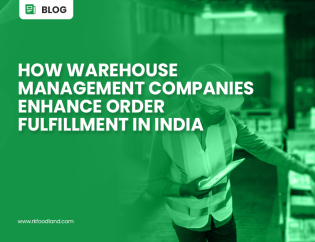
Supply chain sustainability has been building up steam in recent years, as consumers are becoming more environmentally conscious and are expecting businesses to do the same. A growing number of companies are looking to build sustainability into their supply chain operations as it has direct impact on the environment as they try to compete with a growing consumer base.
It is widely established that sustainable business can equate to profitable business. So, how can a sustainable supply chain benefit your business?
Reputation
Ensuring that companies focus on the planet along with their profits makes good business sense and enhances their reputation as a sustainable company.
Profitability
Thinking sustainably will help drive down costs and reduce expenditure in the long run, which will further help towards increasing the profitability of the firm.
Innovation
Establishing a sustainable supply chain enables companies to work with partners who provide environmental friendly products and services that foster innovation.
There is no quick and easy path to sustainability, but the right solutions can help achieve a defined sustainable supply chain.
- Map the entire supply chain
Companies tend to account for waste and activity at every stage as part of their overhead. Therefore, having a comprehensive understanding of how sustainability impacts every unit of business including the supply chain is essential. An early step is to evaluate inventory suppliers, identify the most significant environmental and social challenges and then to prioritize efforts.
Establishing and communicating expectations through a code of conduct is a critical step in involving every unit in the sustainability efforts.
- Develop lean processes to reduce waste
Simplifying procedures and eliminating wasteful practices contributes substantially in improving supply chain efficiency and reducing waste. It is important to focus on small, iterative improvements along with major changes to bring simplicity in the processes. Every change that reduces waste, speeds up delivery or enhances quality makes an incremental improvement to sustainability.
- Minimize activities through efficient supply and demand planning
Misalignment between supply and demand results in too much or too little production of raw materials, manufacturing of goods and distribution of products. This creates rework and excessive inventory which is a massive source of waste. Lead times are one of the greatest areas of waste within a company that should be controlled through process improvement. Good predictive analytics combined with machine learning can forecast likely demand and ensure more efficient supply and manufacturing processes.
- Create sustainable warehouses
The warehouse is an important component of efficient sustainable supply chains. When it comes to creating sustainable value, there are several practices that warehouses can implement such as automating both warehouse solutions and management processes, increasing energy efficiency within a warehouse, and optimizing warehouse design. Some practices like smartly located inventory which can bolster efficiency and productivity or use of electric forklifts which eliminate the need for gas and oil in warehouse operations can revolutionize the way how companies adopt green approach to procurement and warehouse management.
- Optimize routes to reduce fuel consumption
Route optimization as well as using renewable fuels considerably helps to reduce the environmental impact of transportation and distribution. Artificial intelligence can work with GPS devices to optimize shipping routes. Advanced analytics can even help update routes in real time, to take account of congestion and other issues.
Through our expertise, we, at Radhakrishna Foodland have helped a leading QSR chain to tackle the problem of disposing off used cooking oil by converting it into biodiesel and used it in vehicles for transportation to stores. This helped the QSR chain to reduce misuse of used cooking oil as well as air pollution during transportation. The environment friendly solution added credibility to the brand and enhanced its brand image.









